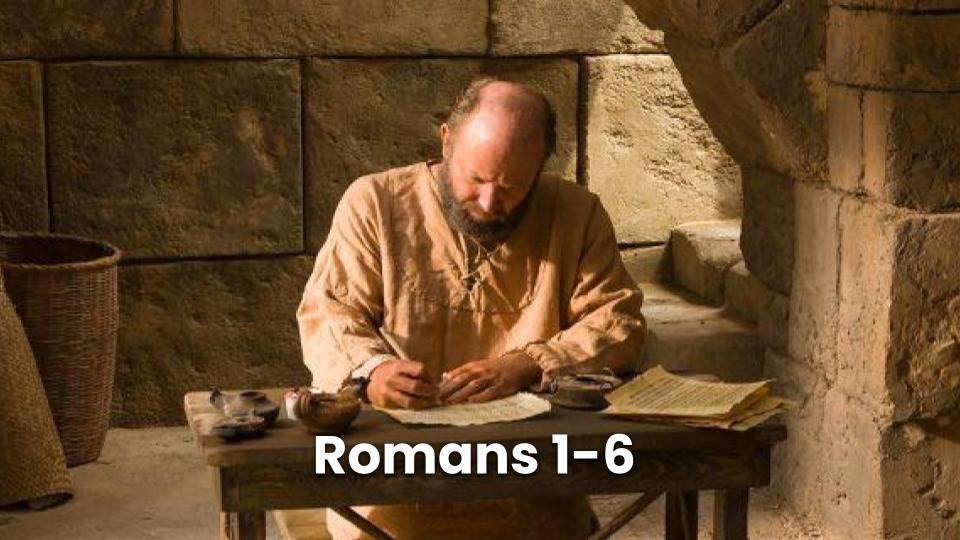Here are some ideas for learning and teaching a few of the great principles in Romans 1-6. And while you’re here, I recommend you check out my free online course, “Seeking Jesus.”
Short Clips from Seeking Jesus
I’ve pulled out a short clip from the “Seeking Jesus Course” connected to this week’s readings that you could use as a morning devotional or spiritual thought.
Ideas for Learning More About Romans 1-6
***”The Message” of Romans***
Romans is a tough book to read! You might find it helpful to read Romans in a different Bible translation (yes, it’s okay to use alternate Bible translations). For the simplest translations, try The New Living Translation or The Message. I bought a copy of the New Testament in the New Living Translation for each of my kids so that we could try it for our family study as we read the Pauline epistles. The font is very tiny, but it works for kids with good eyesight (not me!) The books are only $1.99 on Amazon with free shipping!
***A True Christian***
Show some fun pictures that show that an individual is “a true fan” (of a sports team, a movie, etc.). Lead a discussion about how you can tell if somebody is “a true fan.” Is it just about what they wear? What are other indicators?
Invite learners to turn to Romans 2:28-29. In context, Paul is talking about how to know if somebody is “a true Jew.” He writes, “You are not a true Jew just because you were born of Jewish parents or because you have gone through the ceremony of circumcision. No, a true Jew is one whose heart is right with God. And true circumcision is not merely obeying the letter of the law; rather, it is a change of heart produced by the Spirit. And a person with a changed heart seeks praise from God, not from people.” (New Living Translation)
Have learners rewrite these verses to describe “a true Christian” or “a true member of The Church of Jesus Christ of Latter-day Saints.”
***Powerful One-Liners***
I’ve written about finding powerful one-liners before. Romans is a great place to search for one-liners. Consider the following:
“I am not ashamed of the gospel of Jesus Christ” (Romans 1:16).
“We all fall short of God’s glorious standard. Yet God, in his grace, freely makes us right in his sight” (Romans 3:23-24, NLT).
“Even when there was no reason for hope, Abraham kept hoping” (Romans 4:18, NLT).
“Do not give in to sinful desires” (Romans 6:12, NLT).
“Give yourselves completely to God” (Romans 6:13, NLT).
Take some time to find (and/or help those you’re teaching find) some powerful one-liners from Romans!
***Romans 5 and Barabbas***
One of the most powerful phrases in Romans is, “While we still were sinners Christ died for us” (Romans 5:8). If you missed the chance to dive deep into Barabbas back in Matthew 27, Mark 15, Luke 23 and John 19, you might spend some time thinking about how this phrase is personalized in Barabbas. This video is one of my favorites.
***Baptism and Crucifixion***
In 1830, the Lord counseled Emma Smith to make a collection of sacred hymns. The earliest church hymnbook included the following lyrics to describe the Savior’s baptism: “Jesus descends beneath the wave, / The emblem of his future grave” and “As an emblem of thy passion, / And thy vict’ry o’er the grave, / We, who know the great salvation, / Are baptized beneath the wave.”
This hymn is based on Paul’s teachings that we are “baptized into [Christ’s] death,” “buried with him by baptism into death,” and “crucified with him.” By so doing, we are raised into a “newness of life” (Rom. 6 3–4, 6). Baptism, the first of the saving ordinances, is symbolized by being buried in the water, or “planted together in the likeness of his death,” and subsequently being raised up out of the water again “in the likeness of his resurrection” (Rom. 6:5). This new life means that we must consider ourselves “dead indeed unto sin, but alive unto God through Jesus Christ,” for “as many of [us] as have been baptized into Christ have put on Christ” (Rom. 6:11; Gal. 3:27). With new life, we keep God’s commandments with transformed faith.
As a cross-reference, when Alma introduced baptism to the people of King Noah, he said that part of being baptized was being willing “to stand as witnesses of God at all times and in all things, and in all places that ye may be in, even until death” (Mosiah 18:9). This verse has been incorporated into the Young Women theme. The final phrase, however, is not included—I sometimes joke with my BYU students that it might seem strange for newcomers to hear young women recite “even until death.”
But for Alma and his people, this phrase was no laughing matter. The prophet Abinadi had recently stood as a witness of God, literally even until death (see Mosiah 17:20). Even though our baptism probably won’t lead to physical death, it could mean the death of other meaningful things, like a lost opportunity, friendship, or life we had envisioned. When we face such challenging circumstances, we can remember that our baptism symbolizes Christ’s Crucifixion and Resurrection. This knowledge can help us carry the burden of things we’ve lost as we realize what we have gained—access to eternal life. Whether we were baptized recently or a long time ago, we can choose to uphold our complete commitment to Christ. As a bonus consider how other ordinances (the sacrament, endowment, sealing also directly symbolize the crucifixion of Jesus Christ (learn more here)).
***
I hope these resources are helpful to you in your learning and teaching this week!
Do you want more learning and teaching tips for Come Follow Me? Follow me on Instagram or sign up here for emails with insights on Come Follow Me.






